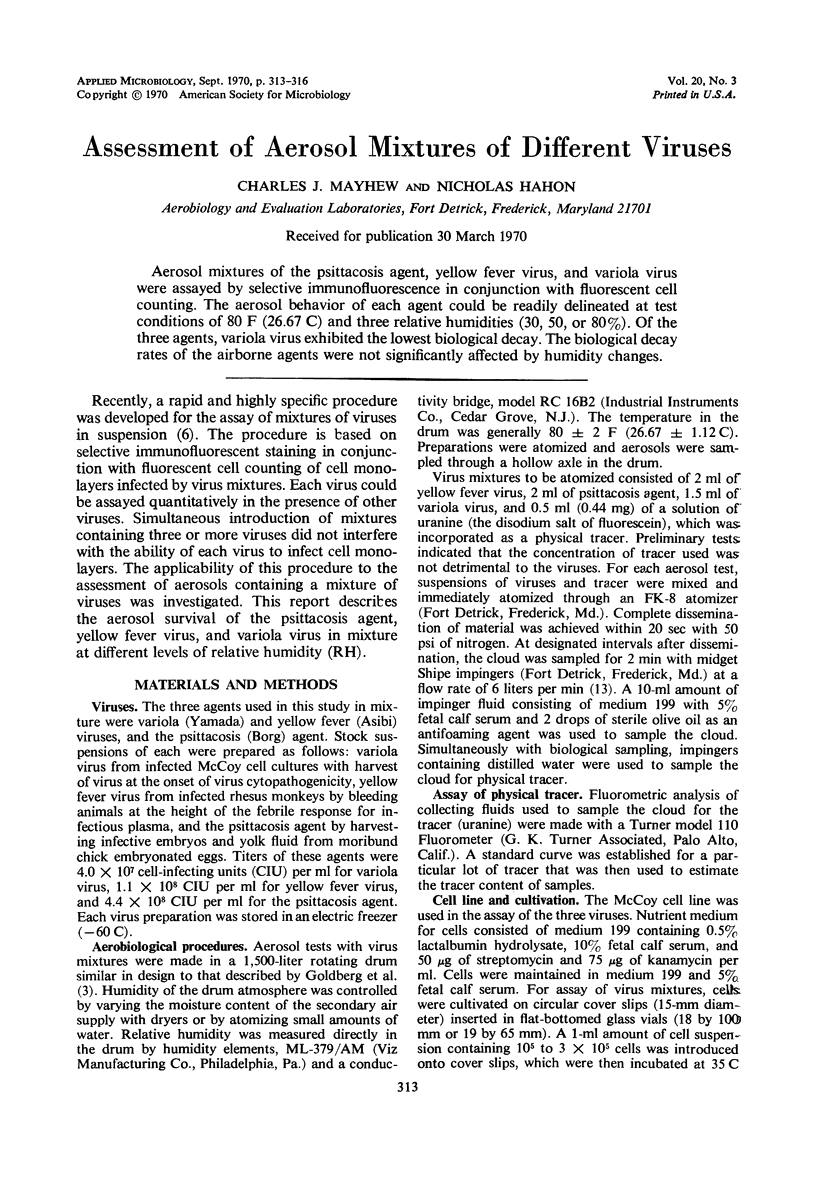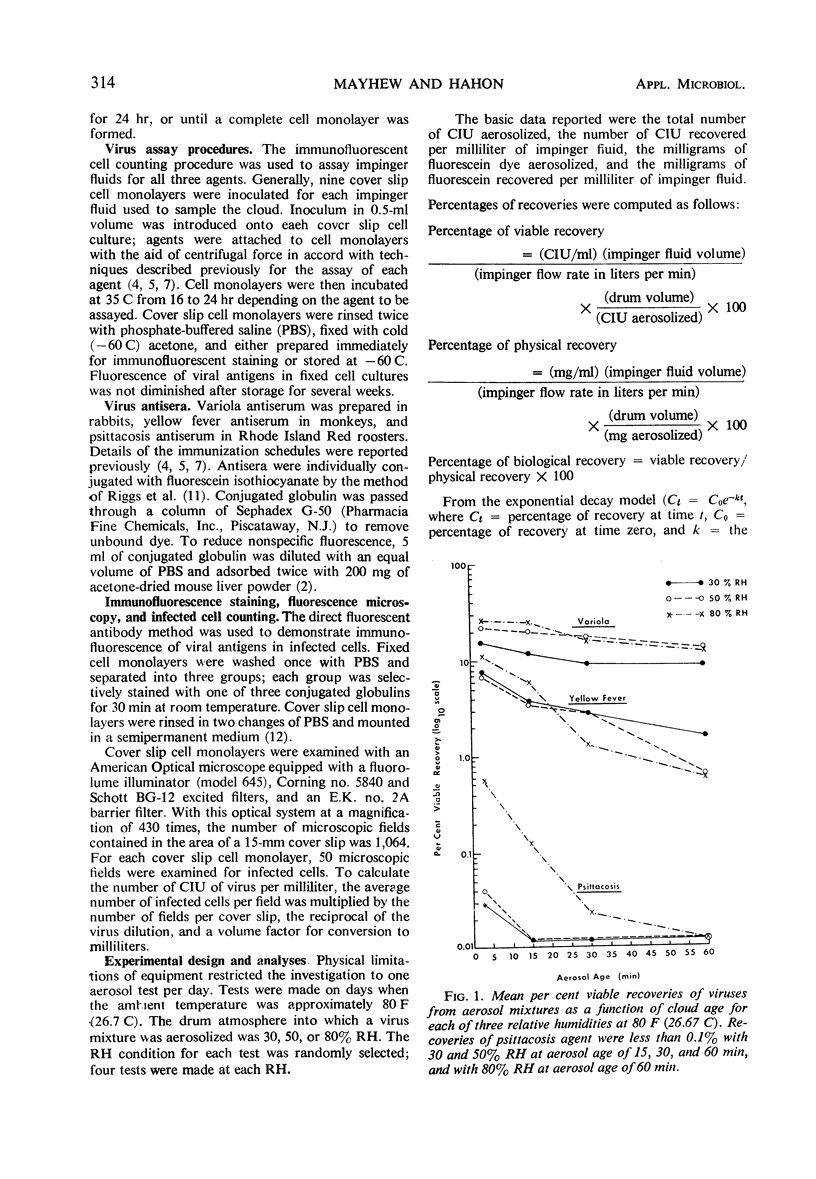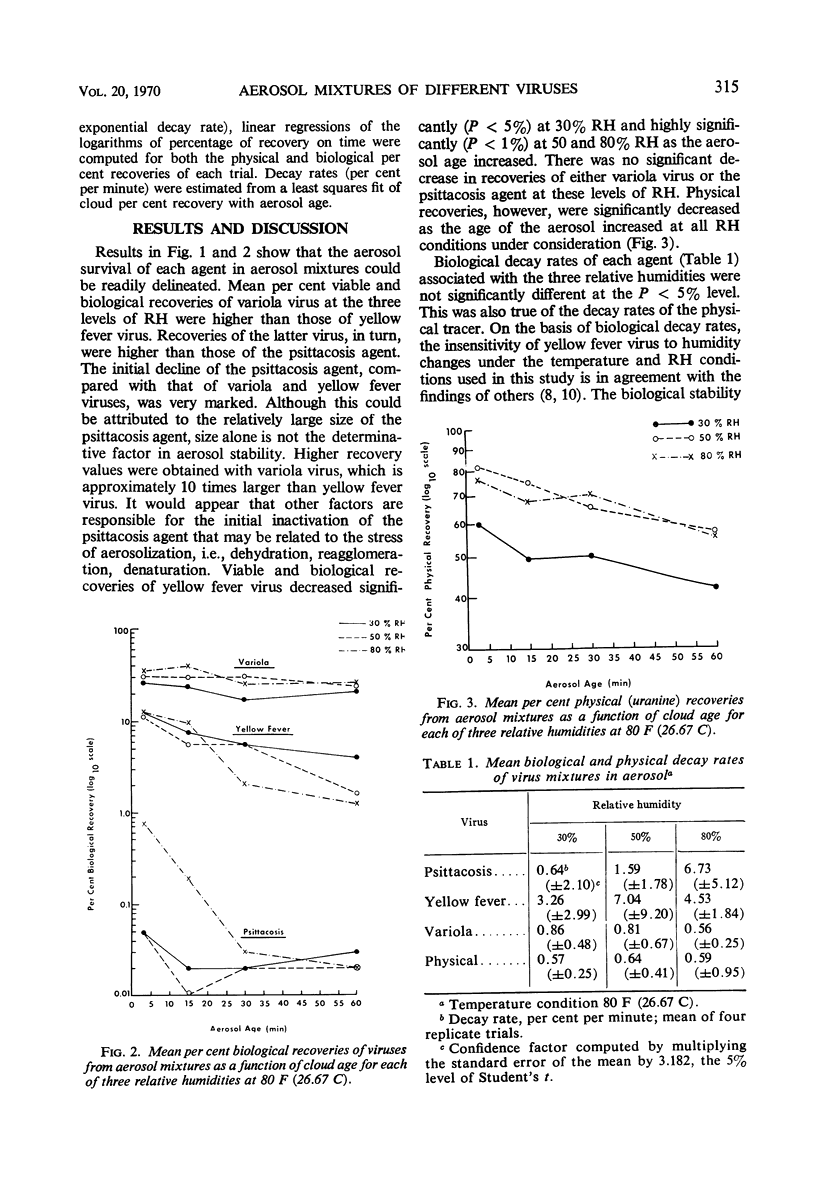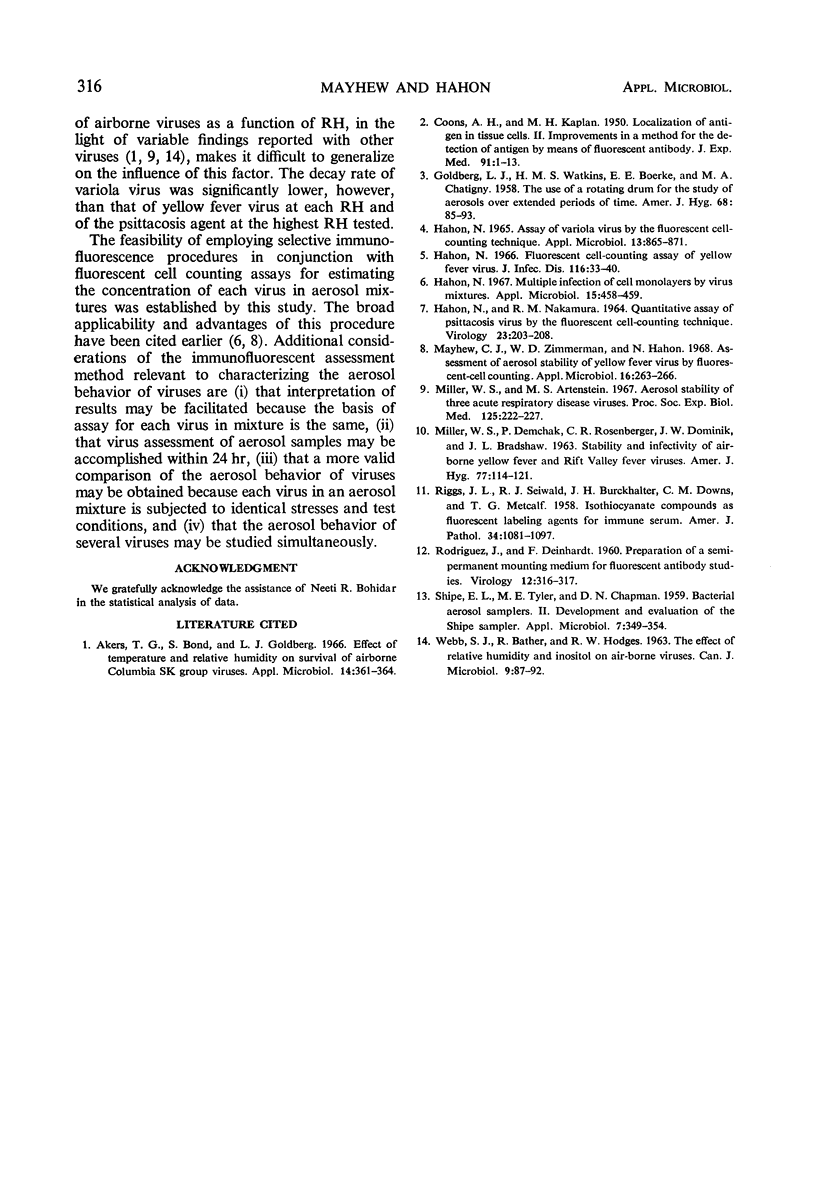Abstract
Aerosol mixtures of the psittacosis agent, yellow fever virus, and variola virus were assayed by selective immunofluorescence in conjunction with fluorescent cell counting. The aerosol behavior of each agent could be readily delineated at test conditions of 80 F (26.67 C) and three relative humidities (30, 50, or 80%). Of the three agents, variola virus exhibited the lowest biological decay. The biological decay rates of the airborne agents were not significantly affected by humidity changes.
Full text
PDF



Selected References
These references are in PubMed. This may not be the complete list of references from this article.
- Akers T. G., Bond S., Goldberg L. J. Effect of temperature and relative humidity on survival of airborne Columbia SK group viruses. Appl Microbiol. 1966 May;14(3):361–364. doi: 10.1128/am.14.3.361-364.1966. [DOI] [PMC free article] [PubMed] [Google Scholar]
- COONS A. H., KAPLAN M. H. Localization of antigen in tissue cells; improvements in a method for the detection of antigen by means of fluorescent antibody. J Exp Med. 1950 Jan 1;91(1):1–13. doi: 10.1084/jem.91.1.1. [DOI] [PMC free article] [PubMed] [Google Scholar]
- GOLDBERG L. J., WATKINS H. M., BOERKE E. E., CHATIGNY M. A. The use of a rotating drum for the study of aerosols over extended periods of time. Am J Hyg. 1958 Jul;68(1):85–93. doi: 10.1093/oxfordjournals.aje.a119954. [DOI] [PubMed] [Google Scholar]
- HAHON N., NAKAMURA R. M. QUANTITATIVE ASSAY OF PSITTACOSIS VIRUS BY THE FLUORESCENT CELL-COUNTING TECHNIQUE. Virology. 1964 Jun;23:203–208. doi: 10.1016/0042-6822(64)90283-1. [DOI] [PubMed] [Google Scholar]
- Hahon N. Assay of variola virus by the fluorescent cell-counting technique. Appl Microbiol. 1965 Nov;13(6):865–871. doi: 10.1128/am.13.6.865-871.1965. [DOI] [PMC free article] [PubMed] [Google Scholar]
- Hahon N. Fluorescent cell-counting assay of yellow fever virus. J Infect Dis. 1966 Feb;116(1):33–40. doi: 10.1093/infdis/116.1.33. [DOI] [PubMed] [Google Scholar]
- Hahon N. Multiple infection of cell monolayers by virus mixtures. Appl Microbiol. 1967 Mar;15(2):458–459. doi: 10.1128/am.15.2.458-459.1967. [DOI] [PMC free article] [PubMed] [Google Scholar]
- Mayhew C. J., Zimmerman W. D., Hahon N. Assessment of aerosol stability of yellow fever virus by fluorescent-cell counting. Appl Microbiol. 1968 Feb;16(2):263–266. doi: 10.1128/am.16.2.263-266.1968. [DOI] [PMC free article] [PubMed] [Google Scholar]
- Miller W. S., Artenstein M. S. Aerosol stability of three acute respiratory disease viruses. Proc Soc Exp Biol Med. 1967 May;125(1):222–227. doi: 10.3181/00379727-125-32054. [DOI] [PubMed] [Google Scholar]
- RIGGS J. L., SEIWALD R. J., BURCKHALTER J. H., DOWNS C. M., METCALF T. G. Isothiocyanate compounds as fluorescent labeling agents for immune serum. Am J Pathol. 1958 Nov-Dec;34(6):1081–1097. [PMC free article] [PubMed] [Google Scholar]
- RODRIGUEZ J., DEINHARDT F. Preparation of a semipermanent mounting medium for fluorescent antibody studies. Virology. 1960 Oct;12:316–317. doi: 10.1016/0042-6822(60)90205-1. [DOI] [PubMed] [Google Scholar]
- SHIPE E. L., TYLER M. E., CHAPMAN D. N. Bacterial aerosol samplers. II. Development and evaluation of the Shipe sampler. Appl Microbiol. 1959 Nov;7:349–354. doi: 10.1128/am.7.6.349-354.1959. [DOI] [PMC free article] [PubMed] [Google Scholar]


